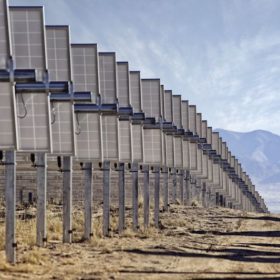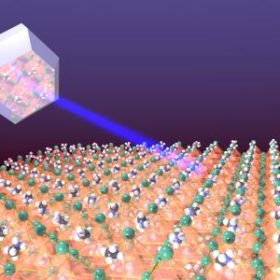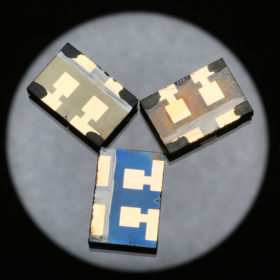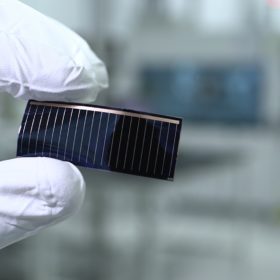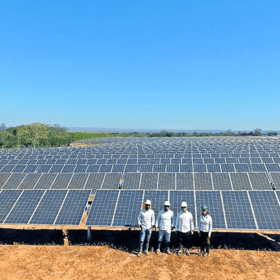Chinese researchers develop new gas-solid perovskite process
In another attempt at cracking the perovskite stability problem, scientists from China’s Liaocheng University and Hefei University of Technology have developed a new gas-solid process for the creation of perovskite thin films, which they say can lead to improved stability and response time.
TÜV Rheinland: Centralized tracker architecture can reduce LCOE
A report published by TÜV Rheinland, which was commissioned by tracker manufacturer, Array Technologies, shows that centralized tracker systems such as those offered by Array Technologies offer an LCOE advantage over other, decentralized system architectures.
Harvesting energy from ‘hot’ electrons could boost perovskite efficiency
Scientists from the University of Groningen have discovered a tin-based perovskite material in which electrons retain high energy levels for much longer than previously. This discovery could allow for the creation of very high efficiency perovskite cells, by eliminating a large portion of energy loss through heat.
Scientists develop laser evaporation process for thin film deposition
A group of researchers from Duke University in the U.S. has developed a new coating process for the creation of hybrid thin film materials. The researchers say their process allows for the creation of solar materials that have until now proven difficult or even impossible to make.
UMass scientists boost polymer-chain storage efficiency
A team from the University of Massachusetts, Amherst (UMass) has developed a polymer based energy storage system, which releases energy on demand as heat. The scientists say their system utilizes a polymer chain ‘organized like a string of Christmas lights’ and can achieve more than double the storage density of previous polymer based systems.
U.S. researchers develop quantum dot solar glass
A team from the Los Alamos National Laboratory has developed a double pane solar glass, using quantum dot PV technology. The researchers say the glass could be integrated into buildings as a semi-transparent window, or added to existing solar panels to boost efficiency.
EPFL proposes standard measurements for perovskite aging
Scientists working on perovskite solar cells at Switzerland’s École Polytechnique Fédérale de Lausanne have proposed a method of standardization for the measurement of stability and degradation in perovskite solar cells, in order to create consensus and speed up commercialization of the technology.
Hanergy to partner with Beijing EV group
Thin film solar producer, Hanergy has announced plans to partner with Chinese electric vehicle group BAIC BJEV to develop thin film solar products ‘for the car and household’, as well construction of distributed generation for industrial parks and solar poverty alleviation projects.
Canadian Solar awarded 112 MW project in Brazil
Leading module manufacturer, Canadian Solar has been awarded a 112 MW project in Brazil, after the country allocated around 574 MW of PV in its recent A-4 power auction.
US researchers model alternatives to farmland for PV deployment
A team of scientists from the University of California has published a study, which says the state could meet 100% of its electricity demand up to 2025 from PV, without having to deploy a single panel on productive farmland or protected natural areas.


